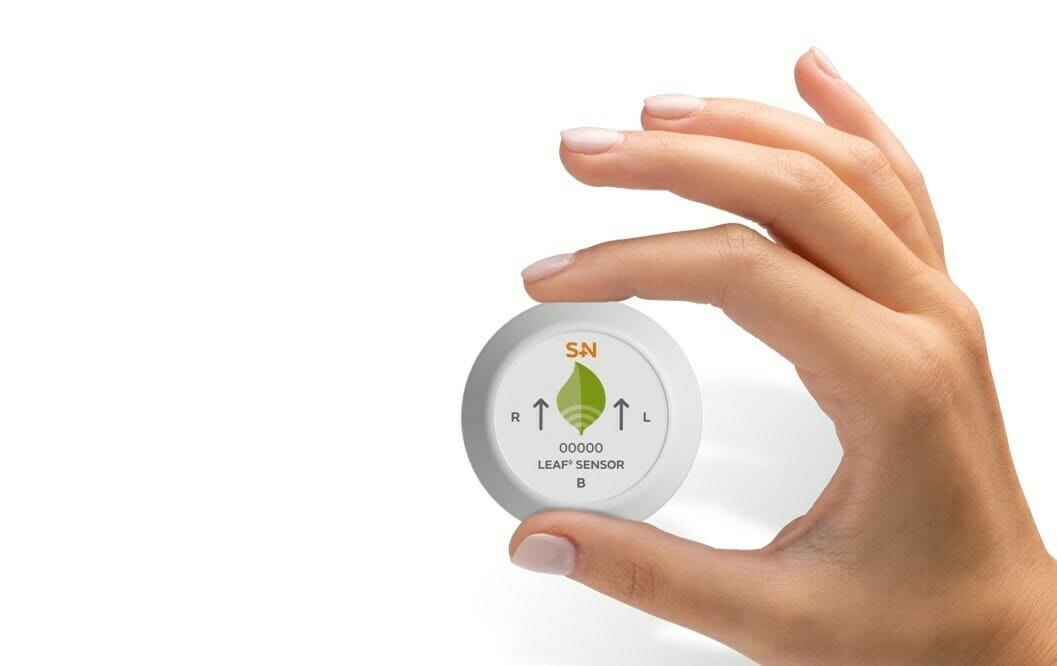Smith+Nephew (LSE:SN, NYSE:SNN), the global medical technology company, today announces that its LEAF Patient Monitoring System has received an Innovative Technology designation from Vizient, Inc., the largest healthcare performance improvement company in the United States. Smith+Nephew exhibited the LEAF Patient Monitoring System at the Vizient Innovative Technology Exchange on October 17th in Dallas, Texas.
Every year, healthcare experts serving on Vizient member-led councils review select products and technologies for their potential to enhance clinical care, patient safety, healthcare worker safety or to improve business operations of healthcare organizations. Innovative Technology designations are awarded to previously contracted products to signal to healthcare providers the impact of these innovations on patient care and business models of healthcare organizations.
The LEAF Patient Monitoring System is the first wearable, wireless solution which meets the recommendations in the National Pressure Injury Advisory Panel (NPIAP) guidelines.1 The LEAF System is proven to help improve adherence to individualized turn protocols up to 98%2,3* and has been shown to help reduce the chance of developing Hospital-acquired pressure injuries (HAPIs) by 73%.3†
The use of the LEAF System helped improve nursing efficiencies,4,5 and generated up to $1.8 million estimated annual cost savings in one facility’s critical care units.4,6
“We are very proud to receive the Innovative Technology designation from Vizient. Pressure injuries are the only hospital acquired complication on the rise in the US, costing roughly $11B in preventable treatments, with dire impact to those patients affected,” said Paolo Di Vincenzo, Senior Vice President US Commercial, Advanced Wound Management for Smith+Nephew. “We will not settle until we’ve solved this challenge and are excited for the role our LEAF Patient Monitoring System will play – fast becoming a standard of patient care in the U.S. and reducing facility costs.”
The LEAF System indications, contraindications, warnings, precautions and other important information can be found in the product’s Instructions for Use.
References
† In acutely ill patients in ICU compared to traditional turning methods from 2.7% to 0.7%; p = 0.012
1. European Pressure Ulcer Advisory Panel, National Pressure Injury Advisory Panel and Pan Pacific Pressure Injury Alliance. Prevention and Treatment of Pressure Ulcers/Injuries: Clinical Practice Guideline. Emily Haesler (Ed.) EPUAP/NPIAP/PPPIA: 2019. 2. Schutt SC, Tarver C, Pezzani M. Pilot study: Assessing the effect of continual position monitoring technology on compliance with patient turning protocols. Nurs Open. 2017;5(1):21-28.
3. Pickham D, Berte N, Pihulic M, Valdez A, Mayer B, Desai M. Effect of a wearable patient sensor on care delivery for preventing pressure injuries in acutely ill adults: A pragmatic randomized clinical trial (LS-HAPI study). Int J Nurs Stud. 2018;80:12-19.
4. Smith+Nephew 2020.Leveraging novel technology to decrease hospital-acquired pressure injuries. Internal Report. EO.AWM.PCS006.001.v1.
5. Rogers M. Reducing Hospital-Acquired Pressure Injuries (HAPI) in Long-term Acute Care with Turn Cueing Technology. Poster presented at: American Organization for Nursing Leadership; March 18- March 21, 2020; Nashville, Tennessee, USA.
6. Gasparini R, Derisma Q, Hannon R. “Turning” to Technology: Reducing Hospital Acquired Pressure Injuries in Critical Care with Visual Turn Cueing. Poster presented at: National Pressure Injury Advisory Panel Annual Conference; March 10- March 12, 2021; Virtual Conference.
